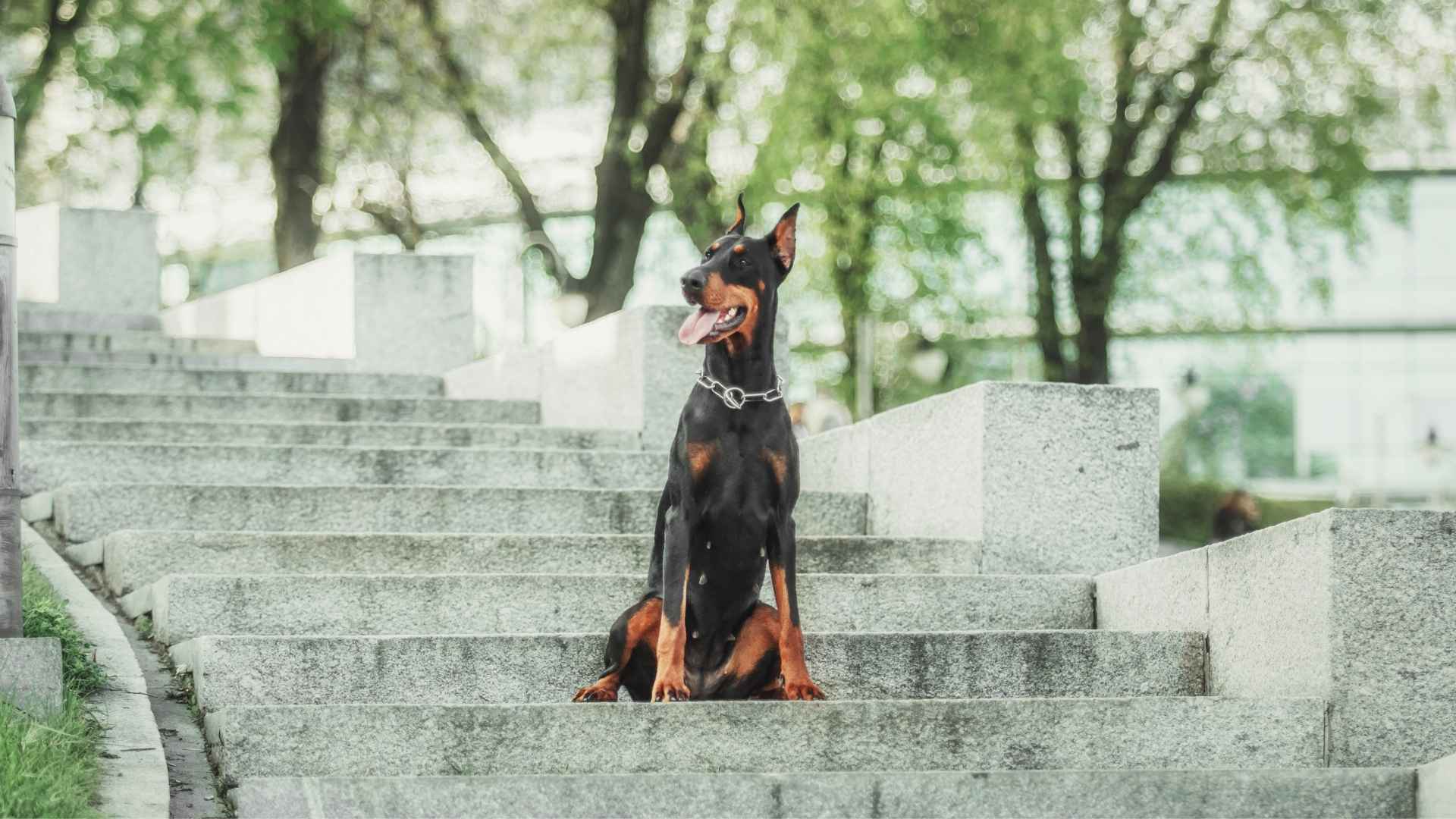Some dogs are naturally protective, but not all need to be on high alert every moment. You might want a dog that watches over your home but doesn’t aggressively approach every visitor. Finding that perfect balance between security and a calm household can be challenging. The excellent guard dogs protect without unnecessary stress.
An occasional protector dog knows when to step in and when to relax. These guard dog breeds assess threats intelligently, acting only when necessary. They offer security without making daily life stressful. If you worry about home safety and want a dog that fits seamlessly into your lifestyle, these breeds are ideal. Proper training ensures they respond correctly to real threats while remaining well-behaved. A good guard dog provides both security and stability when trained correctly.
Whether you live in a busy neighborhood or just want peace of mind, the right dog can offer both comfort and protection. Let’s explore which breeds fit this role best.
Did you know?
Many protective dog breeds are also highly intuitive, often sensing their owner’s emotions and adjusting their behavior accordingly.
Occasional Protector Dog Breeds
1. Rhodesian Ridgeback
The Rhodesian Ridgeback has an instinct for protection, but doesn’t always feel the need to guard. This breed assesses threats carefully, choosing when to step in. Its dignified presence, powerful build, and keen intelligence make it a formidable deterrent.
Originally bred to track lions in Africa, the Rhodesian Ridgeback possesses impressive endurance and speed. Its short coat requires minimal grooming, but its strong-willed personality means early socialization is essential. Confident and independent, it thrives in an environment with clear leadership.
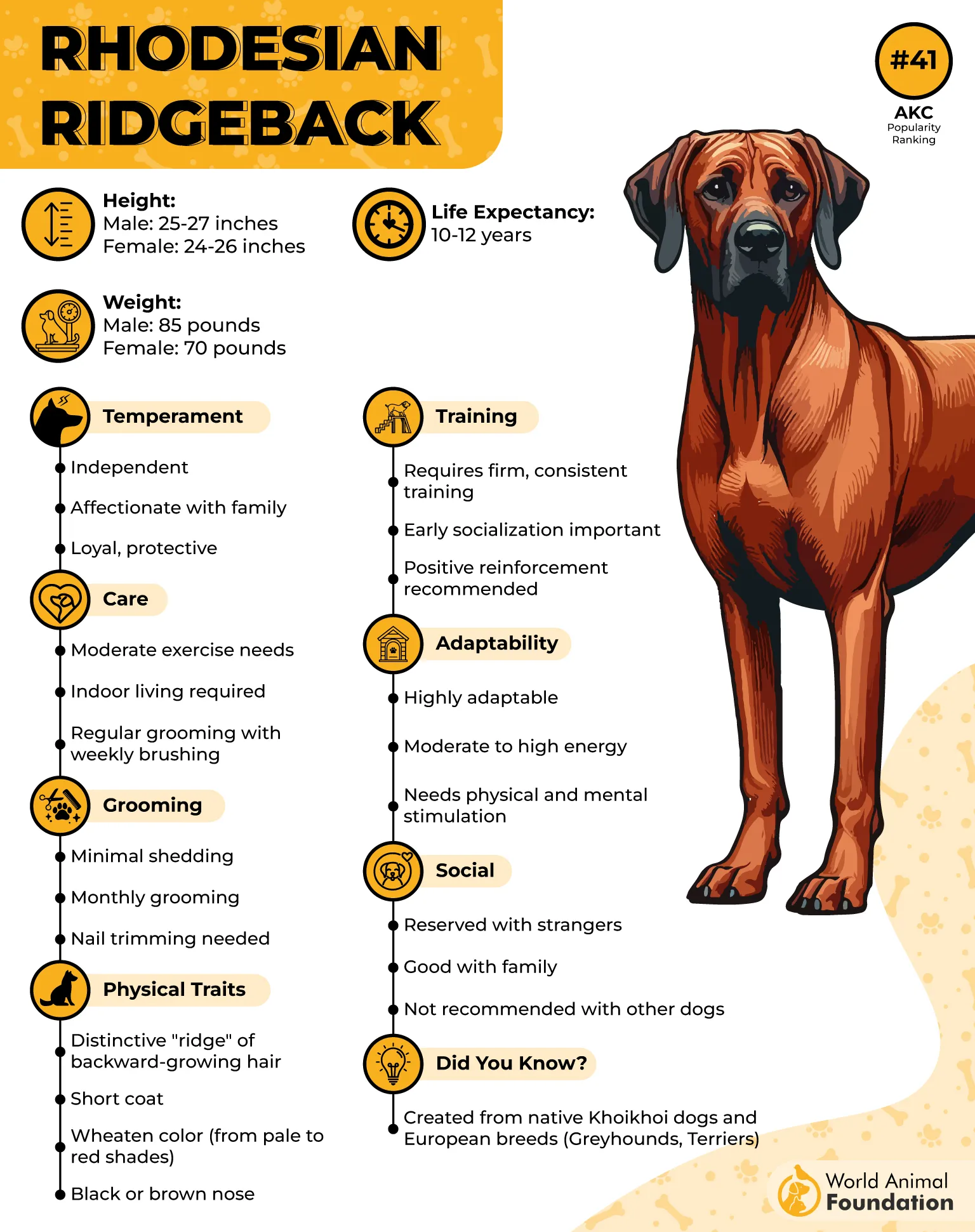
Daily exercise is crucial to maintaining the Ridgeback’s well-balanced temperament. It enjoys long walks, running, and engaging activities that challenge its mind. Without regular stimulation, it may become restless. Secure fencing is necessary as this breed is known for its exceptional jumping ability.
Training a Rhodesian Ridgeback requires patience and consistency. While highly intelligent, it is stubborn and doesn’t always respond immediately. Positive reinforcement and firm guidance help shape its behavior. Professional training can enhance their guarding instincts while maintaining control.
Though protective when needed, this breed isn’t excessively aggressive. It forms strong bonds with its family but tends to be aloof toward strangers. Once it deems a situation safe, it relaxes and resumes its composed, watchful nature.
Fun Fact
The Rhodesian Ridgeback’s distinctive “ridge” along its back is formed by a strip of hair growing in the opposite direction. This unique feature sets it apart from most breeds and is a defining trait of its lineage.
2. Rottweiler
A Rottweiler is a powerhouse of strength and intelligence, often acting as a silent observer rather than an overt protector. It doesn’t react impulsively but carefully evaluates situations before stepping in. When needed, its sheer presence alone is enough to command respect.
The Rottweiler’s history traces back to Roman times when it worked as a cattle guardian. Its muscular build and remarkable endurance make it highly effective in physical tasks. With a confident and self-assured personality, this breed thrives when given a job to do.
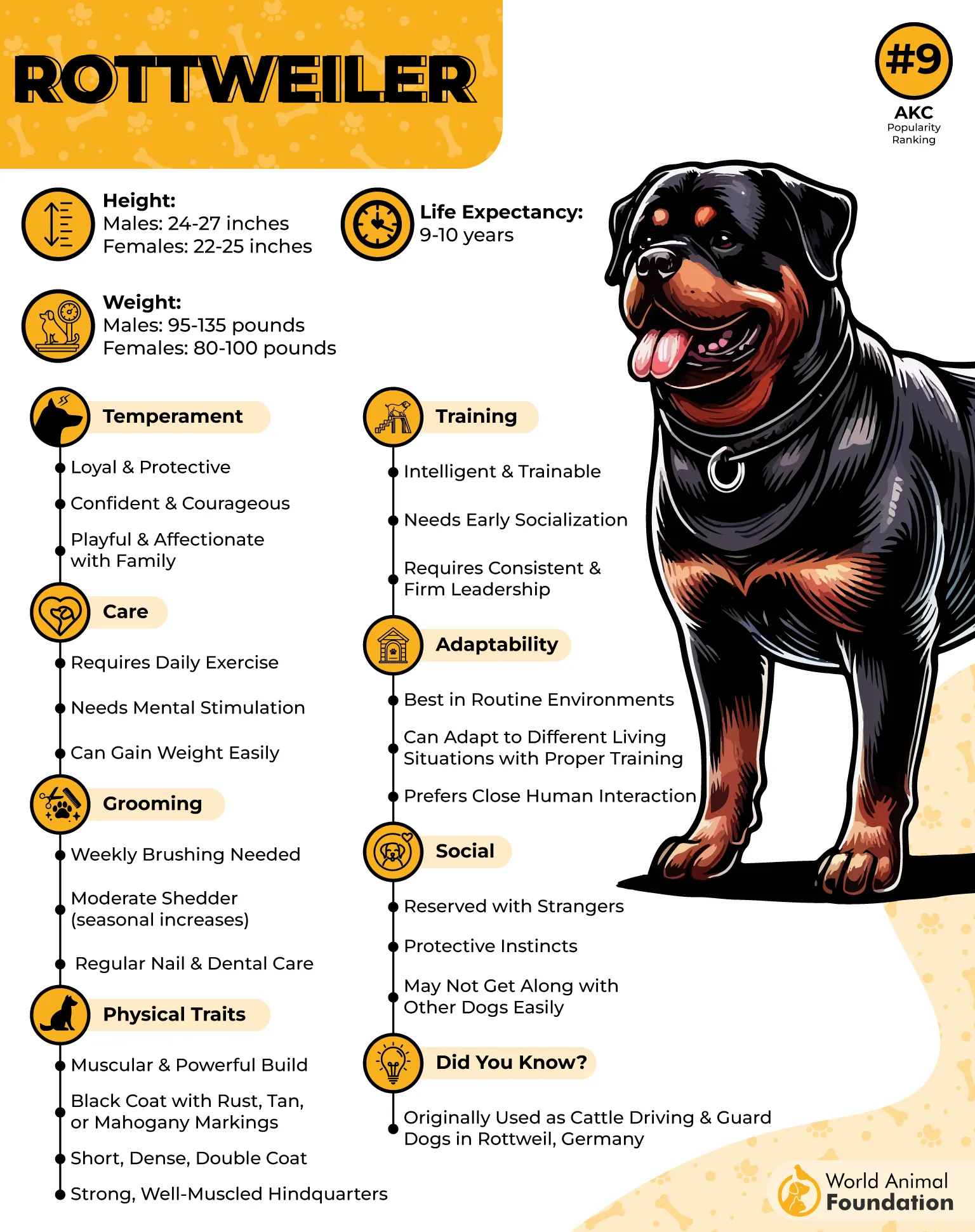
As per the AKC, the Rottweilers require structured training from an early age. Their sharp intelligence allows them to learn quickly, but they need firm, consistent leadership. This breed is highly trainable, excelling in advanced obedience, guard work, and specialized service roles.
Despite their imposing stature, Rottweilers have a calm and composed nature. They form strong attachments to their families but remain discerning around unfamiliar people. Their protective instincts don’t manifest in constant aggression but rather in quiet, calculated vigilance.
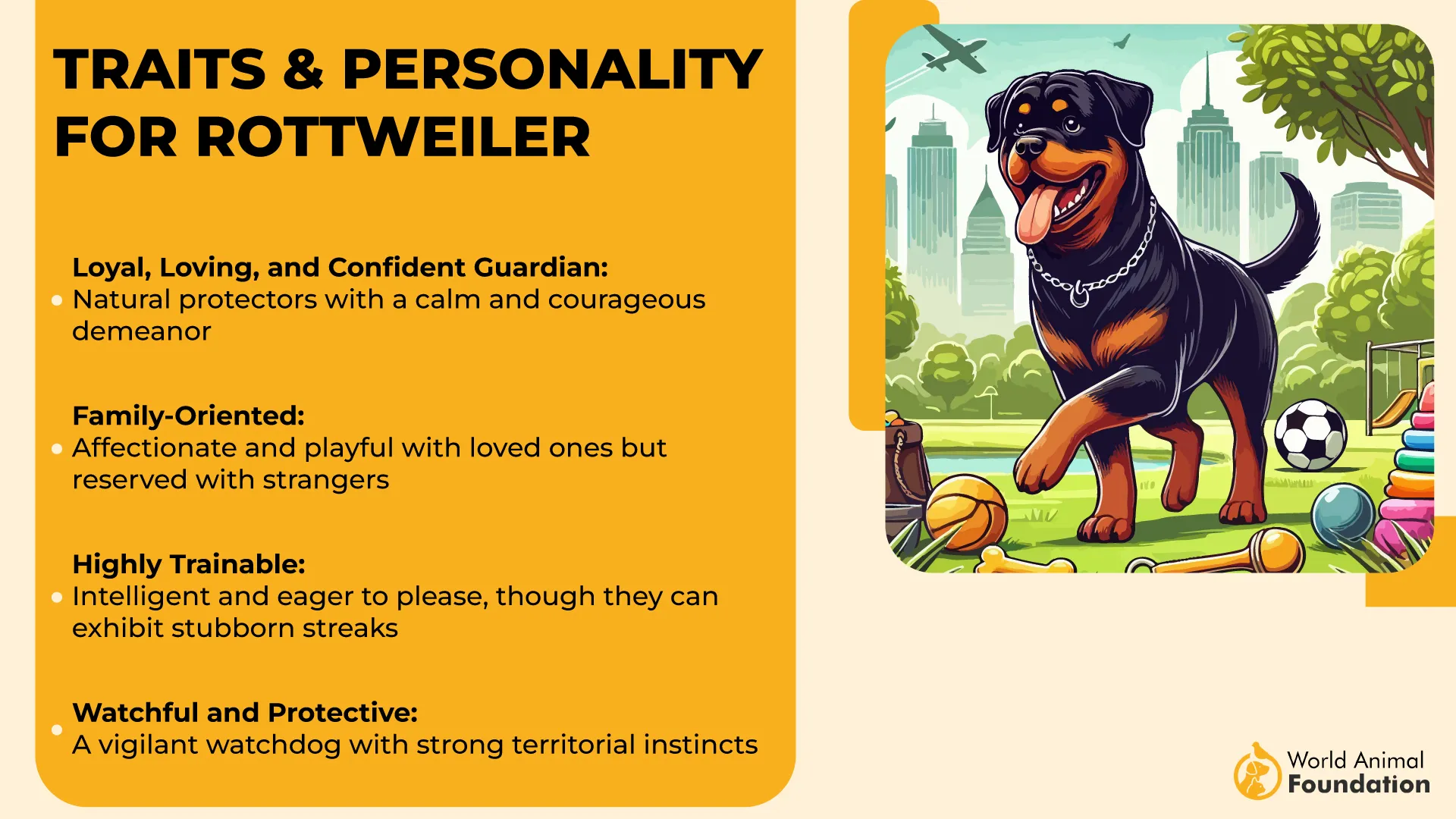
Regular mental stimulation is essential for a Rottweiler’s well-being. Puzzle toys, obedience drills, and interactive play sessions help prevent boredom. Without proper engagement, this breed can become stubborn or destructive, making structured activities an important part of its routine.
Fun Fact
Historically, Rottweilers were used to guard money for traveling merchants. They carried pouches tied around their necks, ensuring that valuables remained secure. This instinct for safeguarding remains a defining characteristic of the breed today.
3. German Shepherd
German Shepherds are known for their versatile skill set, but they don’t always jump into action without reason. Their protective instincts are balanced by a sharp intellect, making them strategic rather than reactive guardians. They analyze threats before responding with decisive action.
This breed thrives in environments where it has a purpose. Whether assisting in police work, search-and-rescue missions, or protection duties, German Shepherds excel in roles requiring both intelligence and discipline. Their athletic build and keen senses contribute to their effectiveness.
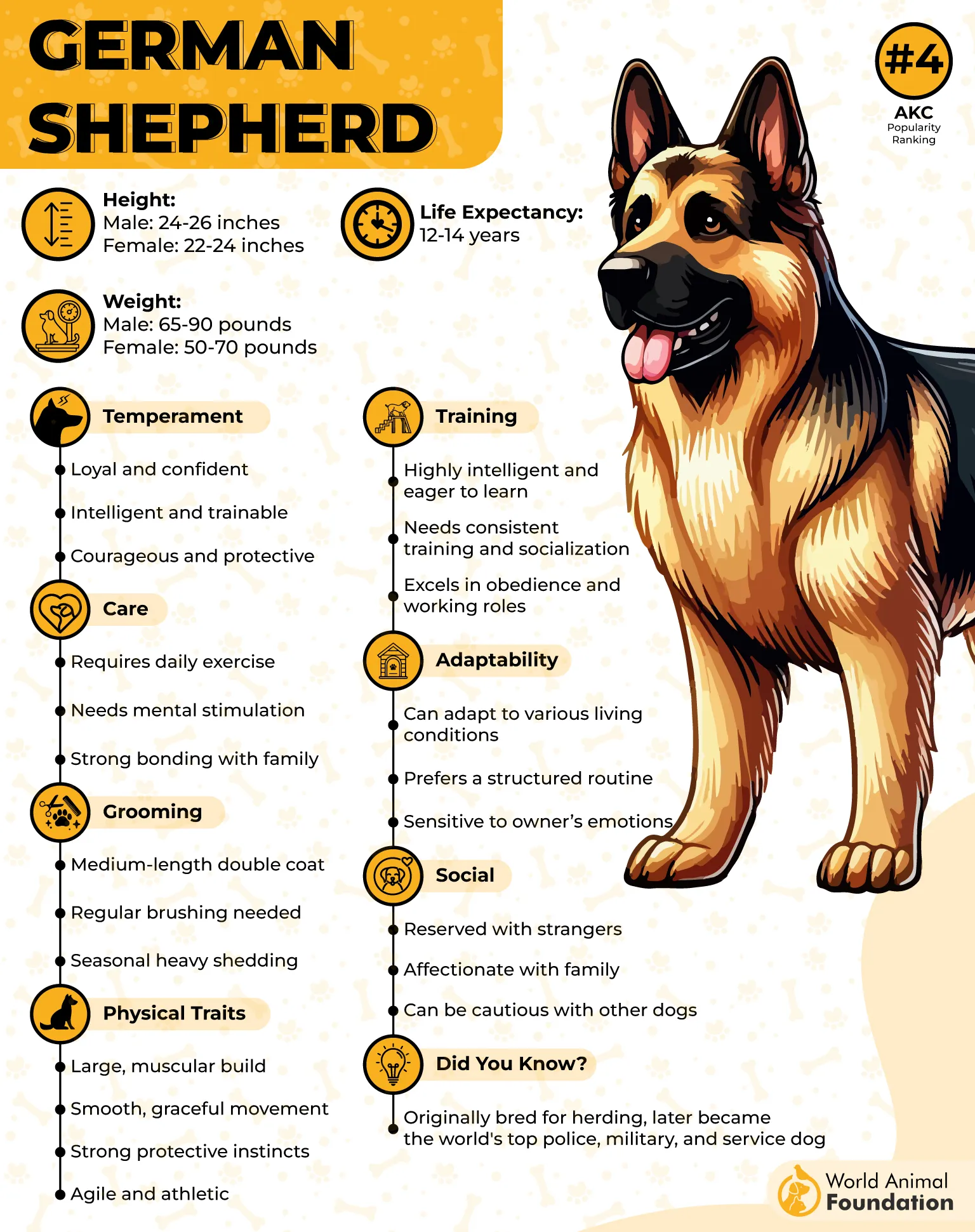
A well-trained German Shepherd is a picture of obedience and control. It quickly grasps commands, following instructions with precision. Early training and socialization shape its ability to differentiate between everyday situations and actual dangers, ensuring it reacts appropriately.
Energy levels in this breed are high, demanding physical and mental outlets. Running, agility courses, and structured play sessions prevent restlessness. It may resort to undesirable behaviors like excessive barking or destructive chewing without regular stimulation.
Though German Shepherds can be affectionate, their protective nature means they remain cautious around unfamiliar individuals. They don’t act on impulse but stand ready to intervene if necessary. Once they assess a person as safe, they become more at ease.
Fun Fact
German Shepherds have starred in countless movies and TV shows due to their intelligence and trainability. From classic films to law enforcement roles, their ability to learn complex tasks has made them one of the most recognizable breeds worldwide.
4. Giant Schnauzer
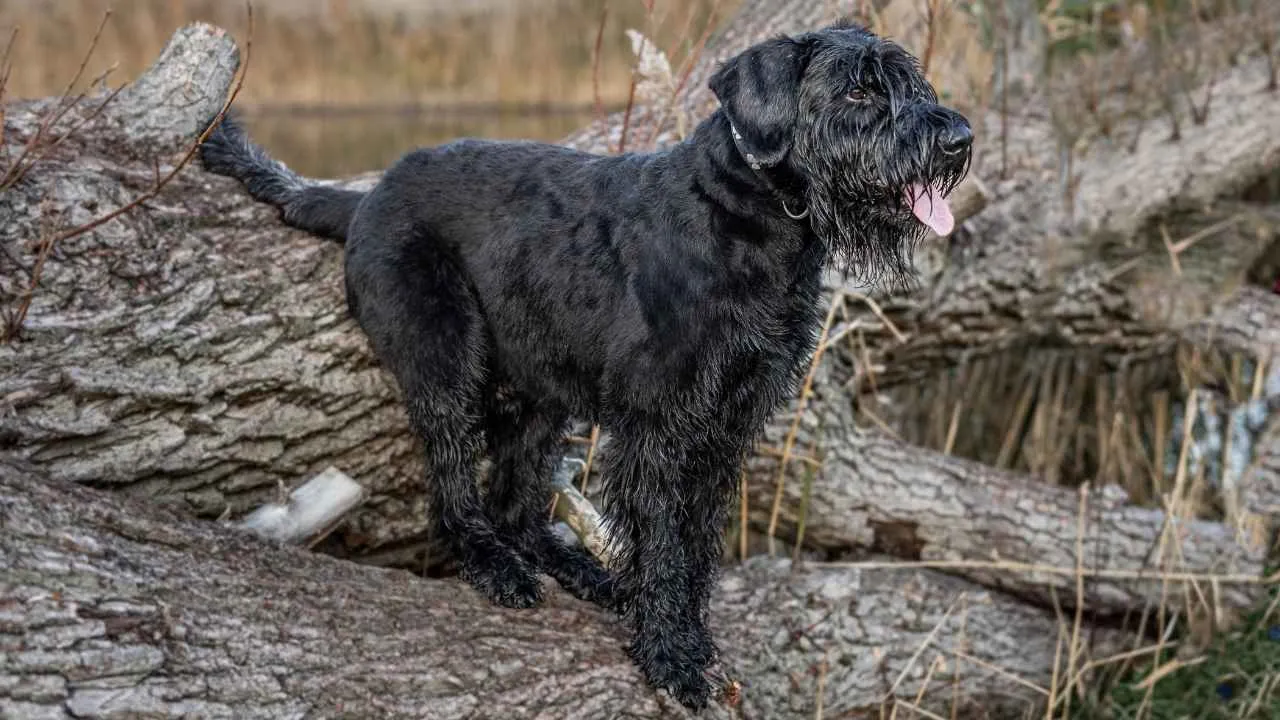
A Giant Schnauzer can be a formidable presence when needed, yet it is not constantly on high alert. Its strong build and sharp instincts allow it to respond swiftly in protective situations while maintaining a composed demeanor in daily life.
This breed has an impressive work ethic, originally bred for herding and guarding. Their intelligence makes them highly trainable, but they require structured leadership. Their natural drive can lead to excessive dominance without proper guidance, making early training essential.
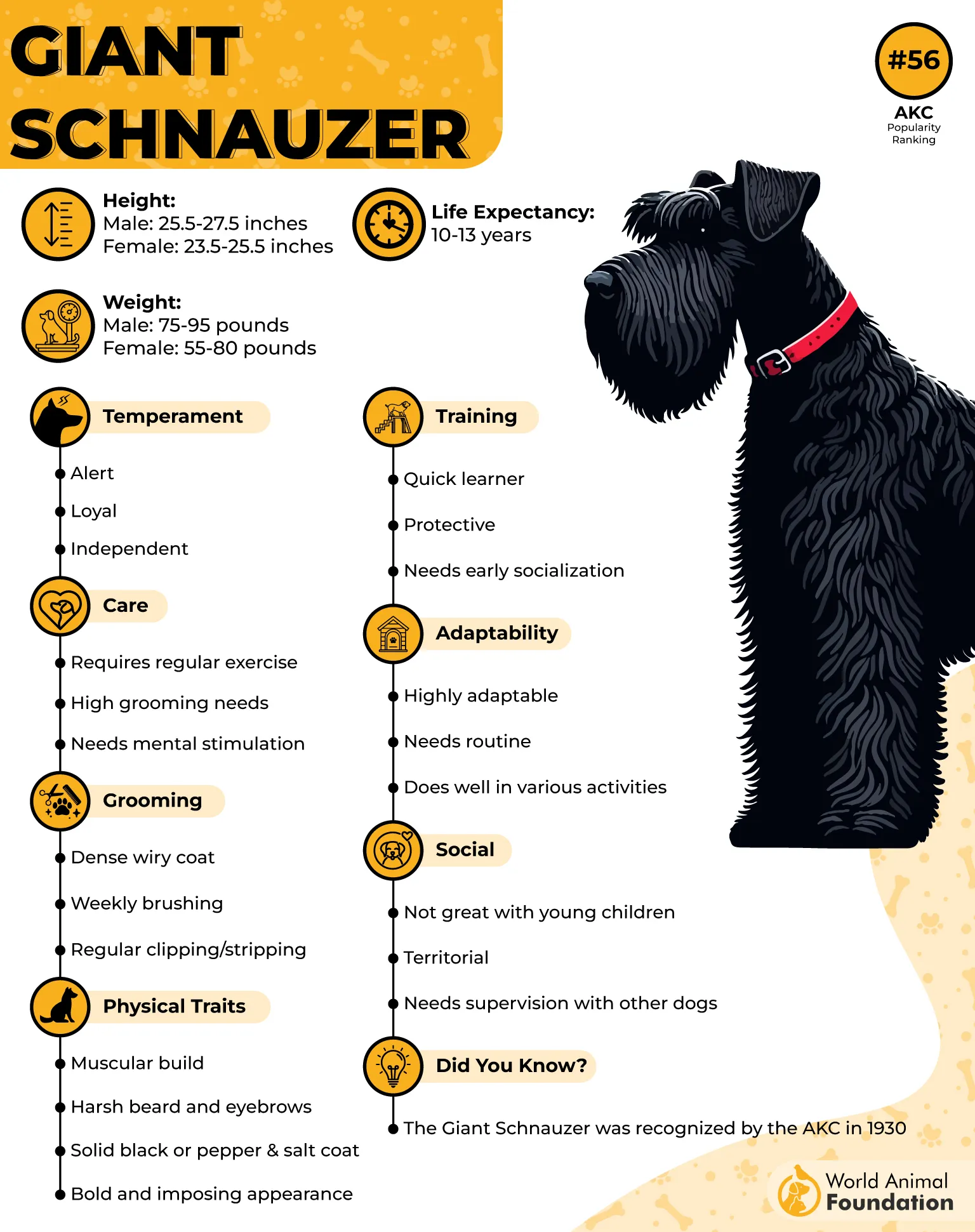
A dense, wiry coat protects from harsh weather, but it requires consistent grooming. Regular brushing prevents mats, and professional hand-stripping maintains the coat’s texture. This upkeep is crucial for their comfort, ensuring their skin stays healthy while keeping their appearance sharp.
Despite their large size, they need mental engagement just as much as physical exercise. PetMD states that daily training drills, problem-solving activities, and interactive play keep them well-balanced. Without these, they may channel their energy into destructive habits that are difficult to reverse.
Their loyalty to their household is unmatched, but they do not immediately warm up to strangers. While not excessively aggressive, they assess situations before reacting. This measured approach allows them to be effective protectors without unnecessary intimidation.
Fun Fact
Giant Schnauzers were once used in breweries to guard valuable beer supplies, showcasing their natural ability to protect assets while blending into the workforce.
5. Boxer
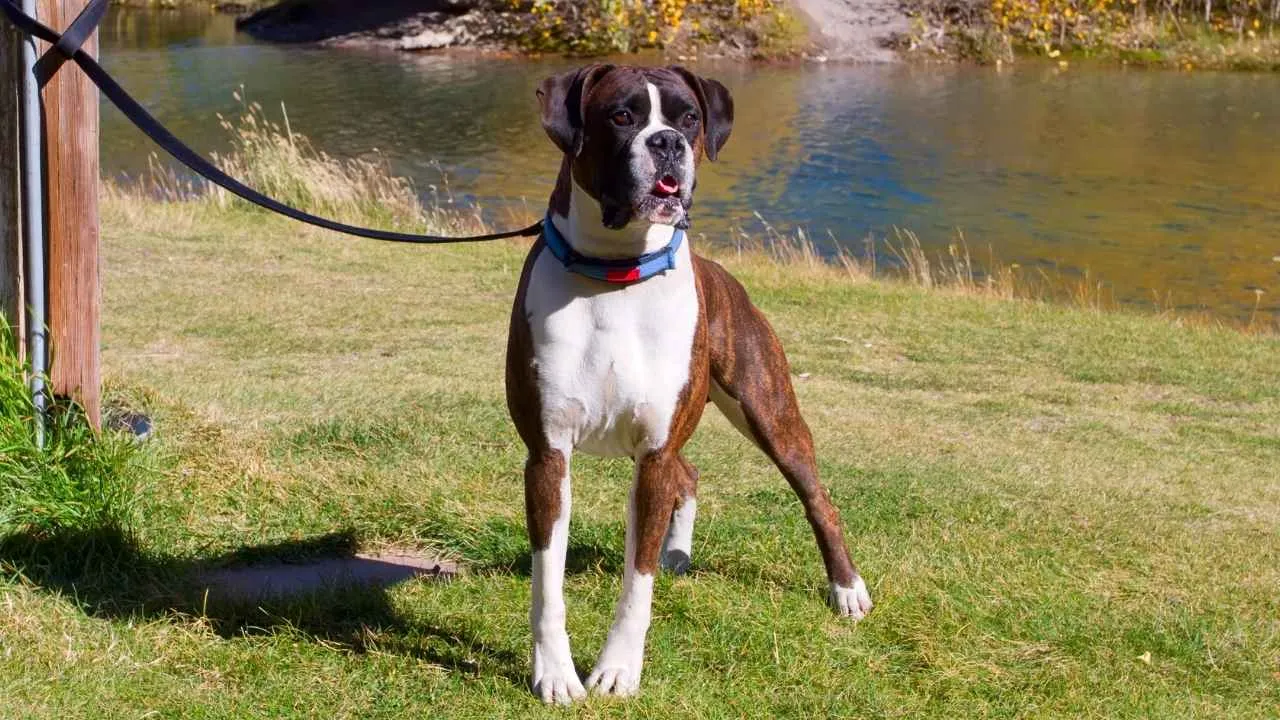
The Boxer is an athletic powerhouse that steps into a protector role when necessary but prefers a balanced approach to life. Its muscular frame and boundless energy make it intimidating, yet it maintains a cheerful disposition in most situations.
This breed thrives on activity and engagement, needing an outlet for its seemingly endless energy. Running, agility exercises, and structured play sessions are vital for keeping their minds sharp and their bodies in peak condition. A bored Boxer can become mischievous.
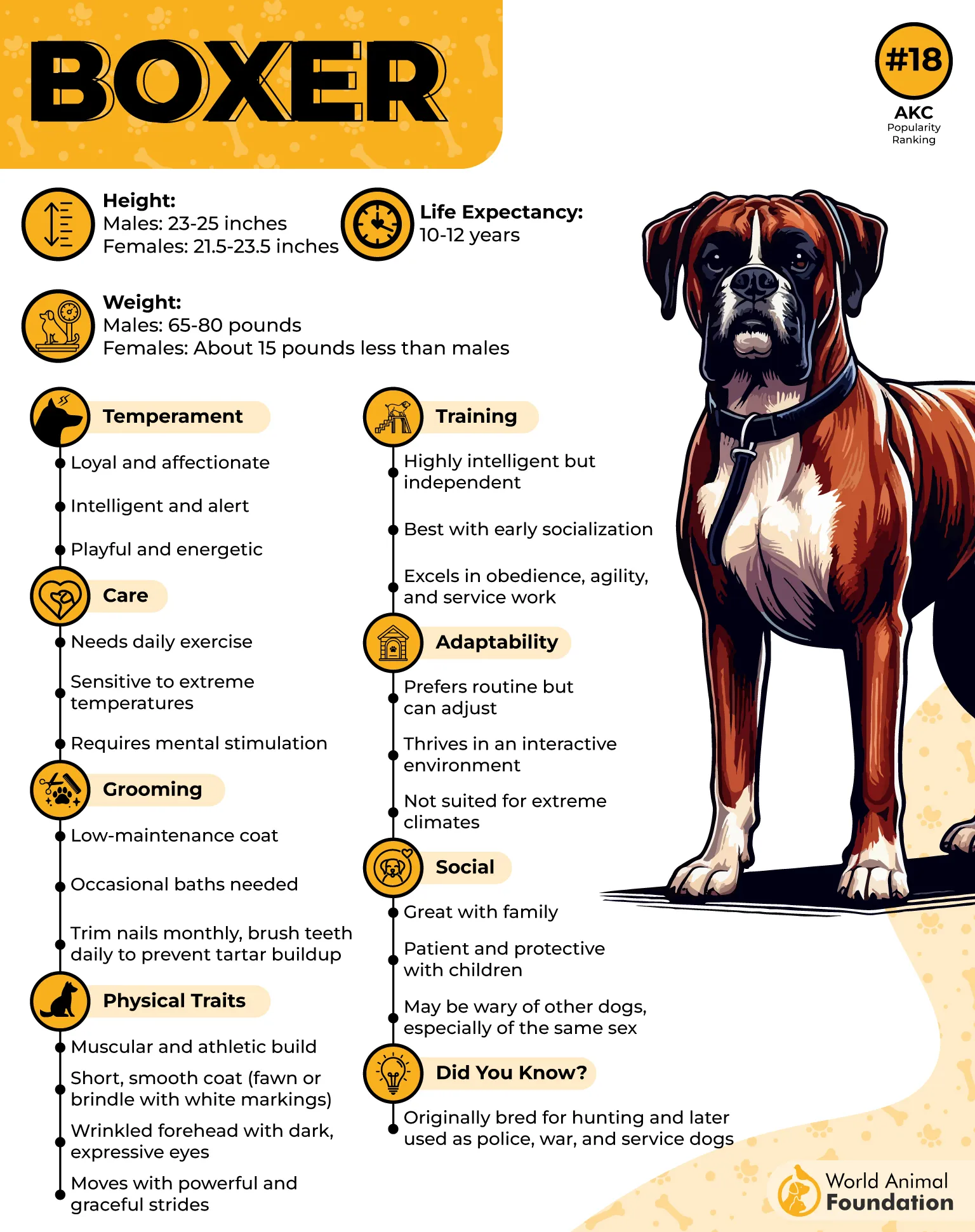
Boxers are known for their expressive faces, with a distinct underbite that gives them a comical yet determined look. Their short coat is low maintenance, but they can be sensitive to extreme temperatures, requiring extra care in harsh weather conditions.
They have an innate sense of alertness, always aware of their surroundings. While they do not bark excessively, they will make their presence known when necessary. Their protective instincts emerge naturally, ensuring they respond appropriately to perceived threats.
A well-trained Boxer is an asset, but early socialization is essential to refine their responses. Exposing them to different environments and experiences helps shape a confident protector who can distinguish between genuine danger and harmless situations.
Fun Fact
Boxers are known for their unique way of using their front paws in play and defense, a trait that inspired their name due to their resemblance to a boxer in the ring.
6. Doberman Pinscher
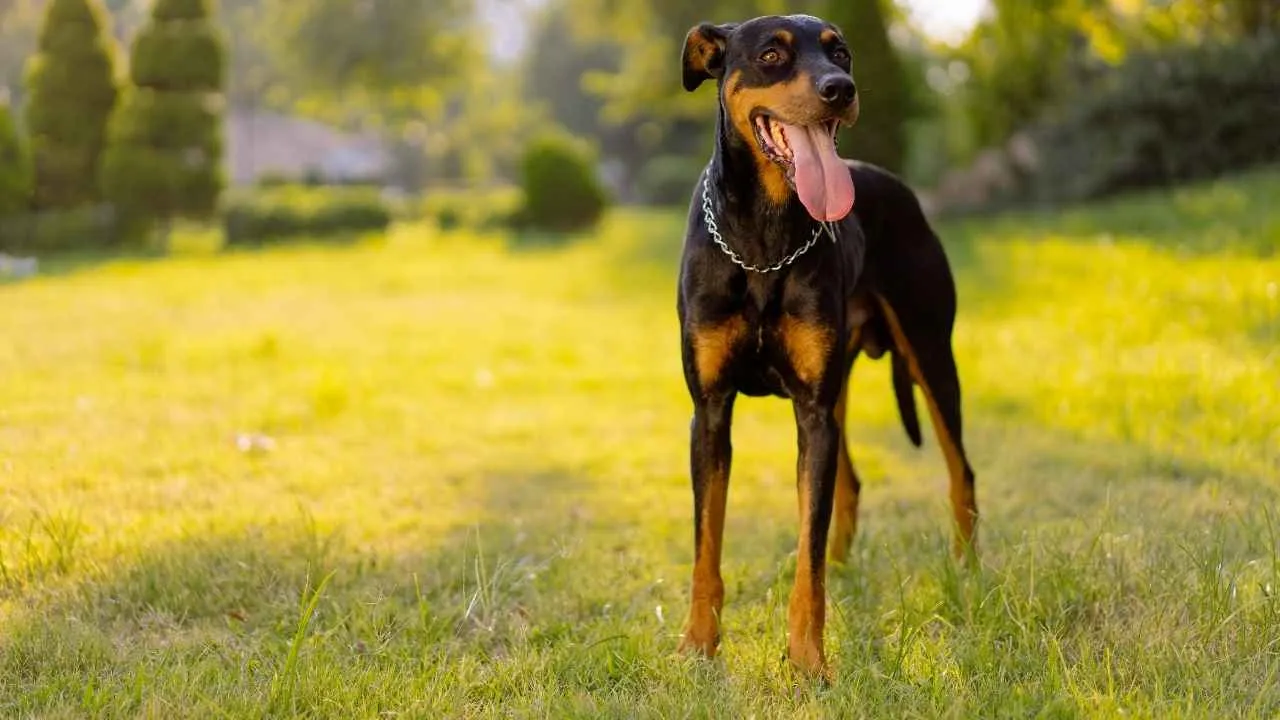
Dobermans have a reputation as fierce protectors, but their approach is strategic rather than impulsive. They excel at assessing situations before acting, making them highly effective in protective roles when needed. Their sleek physique only adds to their imposing presence.
These dogs are natural problem solvers, capable of easily learning complex commands. Their trainability allows them to adapt to various security roles, but they also need a firm, consistent hand in training to ensure they do not become overly dominant.

Despite their short coats, Dobermans require thoughtful care. Their skin can be sensitive, making quality nutrition and proper grooming routines essential. A well-maintained Doberman looks striking and enjoys better overall health and longevity.
They are naturally wary of strangers but do not act aggressively without reason. Their intelligence enables them to differentiate between routine occurrences and genuine threats, making them reliable occasional protectors who do not overreact to every situation.
Advanced obedience drills, scent work, and problem-solving tasks are necessary to keep a Doberman mentally satisfied. When mentally stimulated, they remain calm and composed, only stepping into a protector role when circumstances demand it.
Fun Fact
Doberman Pinschers were originally bred by a tax collector named Karl Friedrich Louis Dobermann, who wanted a strong and intelligent dog to accompany him during his rounds.
7. Bullmastiff
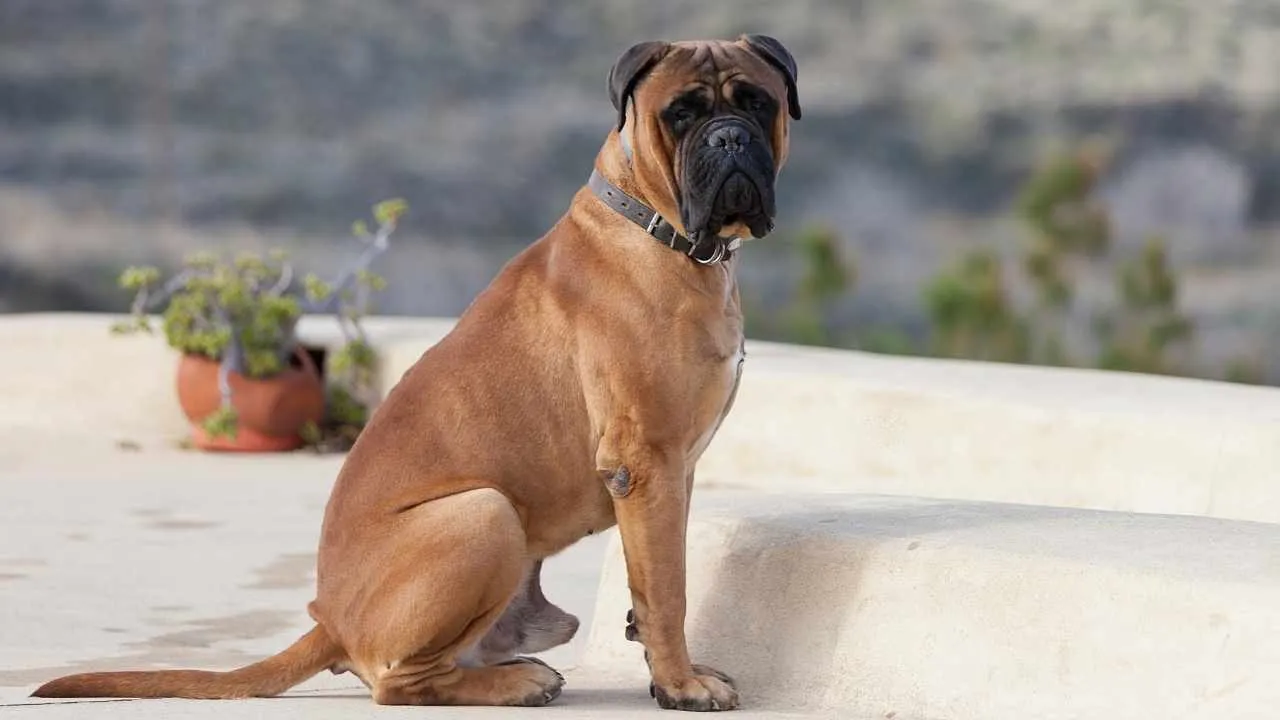
A Bullmastiff is the definition of controlled power. While they do not seek out confrontation, their immense strength and unwavering confidence make them formidable when protection is necessary. Their silent yet watchful nature makes them an unpredictable deterrent.
Originally bred to guard estates, they are known for subduing intruders without excessive force. Their instincts allow them to assess threats accurately, responding with decisive action when necessary but never displaying unnecessary aggression.

This breed’s short, dense coat requires minimal grooming, but their skin folds and large jowls need regular cleaning. Neglecting these areas can lead to skin irritation or infections, making hygiene an essential aspect of Bullmastiff care.
While their physical power is undeniable, mental engagement is equally important. As per Purina, they benefit from structured obedience training and problem-solving exercises, ensuring they remain responsive and well-mannered rather than relying solely on brute strength.
Though they are known for their strong protective instincts, they are not excessive barkers. Instead, they use their presence and body language to communicate warnings, often resolving potential conflicts before they escalate.
Fun Fact
Gamekeepers used Bullmastiffs in the 19th century to track and pin down poachers without causing serious harm, showcasing their controlled yet effective guarding skills.
Conclusion
A well-trained, occasional protector dog provides the perfect blend of security and companionship. These dogs remain calm in everyday situations but step up when a real threat arises. Their intelligence and awareness make them reliable guardians without unnecessary aggression. Unlike dogs bred for dog fighting, these protectors use their innate protective instincts responsibly.
With the right training and socialization, these guardian breeds fit seamlessly into different lifestyles. They adapt to their environment, offering peace of mind without disrupting the household. Their ability to recognize danger while remaining affectionate makes them highly valuable as family protectors. A well-balanced furry friend ensures both safety and companionship.
Among other protective breeds, the Belgian Shepherd stands out for its intelligence and innate protective instincts, excelling in security roles despite not being included in the list above.
Choosing the right occasional protector ensures both safety and balance in daily life. Their presence alone can deter threats while providing a sense of security. A properly trained protector dog brings confidence, knowing your home and loved ones are safe.


